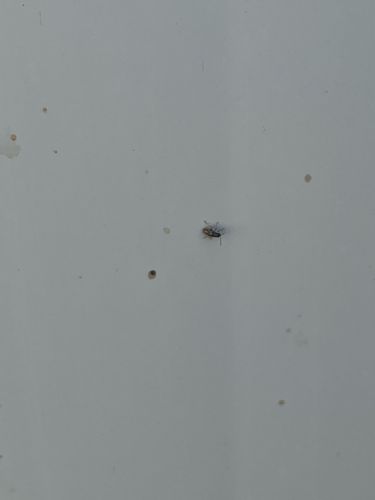House fly
Scientific Name: Musca domestica
Order & Family: Order: Diptera, Family: Muscidae
Size: Typically 6 to 7.5 mm (0.24 to 0.30 inches) in length, with a wingspan of 13 to 15 mm (0.5 to 0.6 inches).

Natural Habitat
House flies are highly adaptive and are found worldwide, especially in human environments. They thrive in close proximity to humans and animals, inhabiting homes, farms, garbage dumps, food processing plants, restaurants, and anywhere organic waste is present. They prefer warm and moist conditions for breeding.
Diet & Feeding
House flies are generalists and feed on a wide variety of decaying organic matter, including rotting fruits, vegetables, meat, feces, and garbage. They also feed on sugary substances, spilled drinks, and a variety of human foods. They regurgitate digestive fluids onto solid food to liquefy it before ingesting.
Behavior Patterns
Flies are typically active during the day, especially around food sources, decaying matter, or areas with moisture. They are known for quick, erratic flight patterns and frequent landings. Their life cycle involves complete metamorphosis: egg, larva (maggot), pupa, and adult. They reproduce rapidly, especially in warm conditions, with females laying many eggs in suitable breeding sites.
Risks & Benefits
Risks: House flies are significant vectors of diseases, potentially transmitting over 100 different pathogens including bacteria (e.g., Salmonella, E. coli), viruses, fungi, and parasitic worms. They spread pathogens mechanically by picking them up on their legs and bodies from contaminated sources and depositing them on food or surfaces. They can cause food spoilage and are a general nuisance. Benefits: In natural ecosystems, house flies play a role as decomposers by feeding on and breaking down decaying organic matter, contributing to nutrient cycling. They can also serve as food for various predators.
Identified on: 8/30/2025